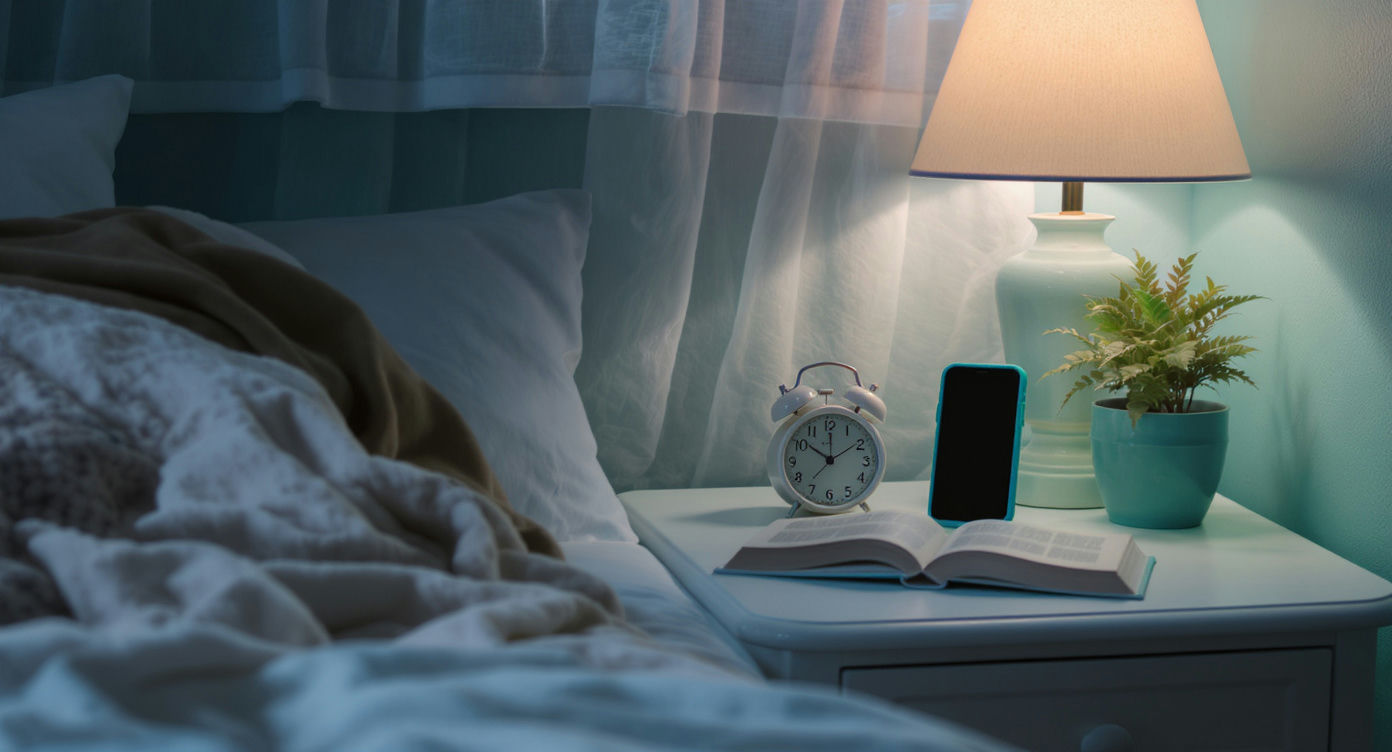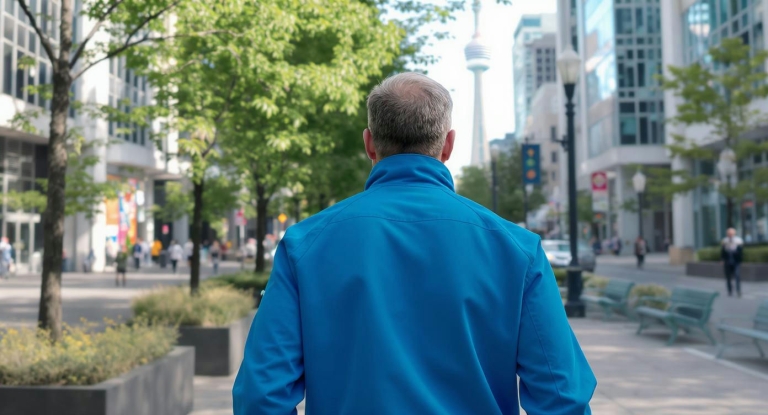Social Media and Teen Mental Health: Practical Boundaries Toronto Families Can Count On
Social Media and Teen Mental Health: Practical Boundaries Toronto Families Can Count On
When a teen’s mood shifts from light to low after scrolling for hours, families feel it. In Toronto and across Canada, social media is part of nearly every adolescent’s day—connecting, creating, learning, and sometimes comparing. Research links heavy, late-night, or emotionally charged scrolling with increased anxiety, sleep disruption, and depressed mood. Yet social media can also foster community and creativity. The difference often comes down to boundaries that are co-created, clear, and compassionate.
At Care&, we believe healthy digital habits are a modern form of preventive health. This guide explains how social platforms influence teen mental health, what warning signs to watch for, and how to set boundaries that actually stick—all with practical, step-by-step strategies Toronto families can start using tonight. You’ll also see how a Nurse Practitioner-led medical clinic can help when more support is needed.
Table of Contents
-
Why Social Media Boundaries Matter for Teen Wellbeing -
What Social Media Does to Teen Brains -
Early Signs Social Media Is Harming Mental Health -
Four Principles for Healthy Digital Boundaries -
A Step-by-Step Family Plan You Can Start Tonight -
Age-Specific Tips -
Parent Scripts for Challenging Moments -
Practical Safety Checklist -
Protecting Sleep: Your Most Powerful Mental Health Tool -
When a “Social Reset” Helps -
When to Seek Professional Care -
How Care& Supports Toronto Families -
Helping Teens Swap Scrolling for Wellness -
How Schools and Workplaces Can Help -
Toronto Access: Locations and What to Expect -
FAQ: Social Media, Teens, and Getting Care in Toronto
Why Social Media Boundaries Matter for Teen Wellbeing
-
Teens need 8–10 hours of sleep to protect mood, attention, and learning. Nighttime scrolling and notifications can delay sleep and fragment rest. -
The teen brain is wired for reward and social feedback, which makes likes, views, and streaks especially compelling. -
Social comparison, cyberbullying, and exposure to harmful content can worsen anxiety or body image concerns. -
Not all screen time is equal. Positive, purposeful use (learning, creative projects, safe communities) supports wellbeing; passive, late-night, or conflict-triggering use can be harmful.
Canadian guidance increasingly emphasizes balance: enough sleep, daily physical activity, and meaningful offline time. For teens, this tends to work better than rigid time caps. The goal is a healthy digital life—not a tech-free life.
What Social Media Does to Teen Brains (In Plain Language)
-
Dopamine loops: Notifications and infinite scroll keep attention hooked. Teens are more sensitive to these reward cycles, making “just 5 more minutes” hard to resist. -
Sleep disruption: Blue light and emotional arousal reduce melatonin and delay sleep, especially when devices are used within 60–90 minutes of bedtime. -
Social comparison: Highlight reels can make everyday life feel “less than,” impacting self-esteem and mood. -
Cyberbullying and harassment: Even a few negative interactions can have outsized emotional effects. -
Information overload: Constant inputs can amplify stress and undermine focus. -
Safety and privacy risks: Location sharing, pressure to share images, and sextortion scams are real risks.
There are also benefits: social connection, access to supportive communities, skill-building, and identity exploration. The key is to structure use so benefits outweigh risks.
Need support for your teen’s digital wellness?
Care& Nurse Practitioners can help assess your teen’s digital habits and create an individualized plan that works for your family.
Early Signs Social Media Is Harming Mental Health
Consider discussing digital boundaries if you notice:
-
Sleep loss: trouble falling asleep, daytime fatigue, or napping after school -
Mood changes: irritability, persistent low mood, heightened anxiety after online time -
Social withdrawal: skipping real-life activities or hobbies -
Academic decline: incomplete work or attention problems linked to late-night use -
Secrecy or distress: hiding activity, crying after messages, or fear about being offline -
Body image concerns: preoccupation with appearance or rapid shifts in eating/exercise -
Risky behavior online: interacting with strangers, sharing personal info, or sending images under pressure
If safety is an immediate concern, seek urgent care. For ongoing worries, a comprehensive, unrushed medical appointment with a clinician experienced in adolescent health can help you plan next steps.
Four Principles for Healthy Digital Boundaries
1. Collaboration over control
Teens are more likely to follow rules they co-create. Invite them to design a plan that protects what they value: friends, sports, music, grades, sleep.
2. Clarity beats complexity
A short list of clear commitments works better than a long, hard-to-enforce rulebook.
3. Consistency with compassion
Hold boundaries, but acknowledge stressful events (exams, team tryouts) may require temporary flexibility.
4. Connection first
Boundaries land best after regular, judgment-free conversations. Start with curiosity: “What do you enjoy most online? What stresses you out?”
A Step-by-Step Family Plan You Can Start Tonight
1) Map the current state (15 minutes)
-
Ask your teen to estimate time on each platform, when they’re on, and how they feel before/after. -
Use built-in tools (Screen Time on iOS, Digital Wellbeing on Android) to check actual usage. -
Note “energy drains” (late-night scrolling, specific accounts) and “energy gains” (creativity, supportive groups).
2) Define goals and guardrails
-
Sleep first: Devices out of the bedroom 60–90 minutes before bed. -
“On-purpose” use: Choose why and when to be online (e.g., 7–9 pm for friends after homework). -
People over pixels: No devices during meals, family time, or in the car after dark if it distracts the driver. -
Privacy and safety: Private accounts, no location sharing to the public, and no sharing images you wouldn’t want a teacher, coach, or grandparent to see.
3) Co-create a simple Family Digital Agreement
Include:
-
Times devices are parked and where they charge overnight (e.g., kitchen or living room) -
Homework-first rule with short, tech-free breaks every 45–60 minutes -
Three behaviors that lead to temporary loss or adjustment of privileges (e.g., hiding accounts, cyberbullying, ignoring safety settings) -
What to do if something goes wrong online (tell a parent or trusted adult without fear of immediate punishment)
4) Configure devices together
-
Set app limits and downtime on phones. -
Turn off notifications from non-essential apps (especially at night). -
Enable privacy settings and restrict location sharing to close friends. -
Consider a shared password manager for safety and recovery.
5) Replace, don’t just remove
-
Add a wind-down routine: shower, light reading, stretching, journaling, or music. -
Keep fun, low-friction offline options visible (cards, sketchbook, puzzle, fidget tools). -
Plan device-free anchors: dinner, a short evening walk, or tea time that becomes a daily ritual.
6) Check in weekly (10 minutes)
-
What felt good online this week? What didn’t? -
One small tweak to try next week. -
Celebrate wins. Adjust limits based on trust and follow-through.
Track Your Teen’s Health Progress in One Place
The Care& app helps you monitor sleep patterns, track mood changes, and coordinate with healthcare providers—all in one secure platform.
Age-Specific Tips
Early teens (12–14)
-
Stronger structure helps: earlier “device bedtime,” tighter privacy settings, and smaller friend lists. -
Coach skills: pausing before posting, handling friend requests, and reporting/blocking when needed.
Middle teens (15–16)
-
Involve them in designing limits: time windows for social apps, group study vs. distraction, and how to handle group chats during homework. -
Emphasize sleep and self-regulation tools (app timers, focus modes).
Later teens (17–18)
-
Treat digital life like driving: earned independence with responsibility. -
Practice “digital adulting” skills: managing digital footprints, spotting scams, and supporting friends seeking help.
Parent Scripts for Challenging Moments
“I’m not angry; I’m concerned. What happened online, and how did it make you feel?”
“Let’s figure out a plan so sleep and school aren’t taking a hit. What would make screens easier to manage this week?”
“Would it help if we paused that app for a few days while we regroup?”
“If a friend shared something unsafe with you, you can tell us. Your safety matters more than any phone rule.”
Practical Safety Checklist
-
✓
Accounts set to private; review follower lists monthly -
✓
Disable location sharing to public and remove geotags from posts -
✓
Turn off message requests from unknown users -
✓
Use two-factor authentication and a password manager -
✓
Agree on a family “panic plan” if sextortion or threats occur: do not pay, save evidence, report to platform and local authorities, and contact a healthcare professional for support
Protecting Sleep: Your Most Powerful Mental Health Tool
8-10
hours of sleep needed
for teens
60-90
minutes screen-free
before bed
0
devices in the
bedroom overnight
-
Use “Do Not Disturb” and night mode -
Encourage a simple pre-sleep ritual: stretches, slow breathing, or a short journal entry
At Care&, we see sleep as a foundation for anxiety treatment and mood stability. When teens protect rest, everything else gets easier.
When a “Social Reset” Helps
A short, cooperative reset can break unhelpful habits—think of it as a “digital detox with a why.”
-
Choose 48–72 hours with your teen’s input. -
Replace social apps with planned activities (visit friends in person, sports, movies, art). -
Debrief together: “What felt easier? Which apps would you bring back differently?”
When to Seek Professional Care
Consider a mental health assessment if you notice:
-
Persistent sadness, panic, or irritability lasting most days for more than two weeks -
Self-harm thoughts, unsafe online behavior, or exposure to threats -
Major sleep or appetite changes -
School avoidance or significant academic decline -
Escalating family conflict around screens despite consistent boundaries
Care& provides comprehensive primary care with Nurse Practitioners experienced in pediatric care and adolescent mental health. Many concerns tied to social media—anxiety, sleep disruption, headaches, stomach pain, or concentration issues—respond well to unrushed, whole-person care that includes coaching, counseling strategies, and, when appropriate, lab work to rule out medical contributors.
How Care& Supports Toronto Families with Real-World Solutions
Nurse Practitioner-led primary care
Our Nurse Practitioners provide thorough, relationship-based care comparable to what many families expect from a family doctor, including mental health assessments, anxiety treatment, and ongoing follow-up. Care& is appointment-based and an alternative to traditional walk-in clinics.
Unrushed appointments, typical availability
Care& typically offers same or next-day appointments at one of our locations, with on-time medical appointments designed to minimize waiting. This supports sensitive conversations teens may not want to rush.
Unlimited access reduces pressure
With unlimited healthcare appointments through our Family Practice membership, families can check in as often as needed. Frequent, shorter visits often work well for teens who benefit from gradual habit-building.
Telehealth and in-person flexibility
Teens may prefer a virtual appointment from the comfort of home or a discreet in-clinic visit. Our telemedicine and telehealth services help remove barriers to timely care.
On-site lab convenience
If labs are needed to explore fatigue, nutrition, or other contributors, our on-site sample collection makes it easier to complete testing quickly.
App-based continuity
The Care& medical app (Toronto families use it on iOS, Android, or web) brings appointments, secure admin chat, health records, and prescription management together so parents and teens can stay organized.
If you’ve been searching online for a “medical clinic near me,” “family doctor near me,” or even “family doctors accepting new patients,” Care& offers a Nurse Practitioner Toronto model that delivers comprehensive primary care with the convenience many families need—an alternative to a walk in clinic near me that still prioritizes continuity and proactive mental health support.
Note: Care& is not a walk in clinic; all care is pre-booked. Our model is an alternative to walk-in clinic care and complements or replaces a traditional family doctor where desired.
Need Support for Your Teen’s Mental Health?
Talk with a Care& Nurse Practitioner about social media boundaries and teen wellbeing.
Helping Teens Swap Scrolling for Wellness
Adolescents are more successful when the plan includes what to add, not just what to remove. Try these evidence-aligned swaps:
For stress:
brief breathing exercises, a 10-minute walk, or a favorite playlist
For low mood:
daytime outdoor time, texting friends to meet in person, short creative projects
For body image concerns:
unfollow comparison triggers, follow body-neutral creators, and explore guided supports through counseling
For sleep issues:
consistent wake time, morning light exposure, and caffeine limits after lunch
For nutrition dips tied to late-night eating:
plan balanced snacks earlier in the evening and reduce screen time during meals
Care& also offers nutrition counseling when energy levels or appetite have shifted—often a useful adjunct to mental health strategies.
How Schools and Workplaces Can Help
Schools
Digital citizenship education, clear reporting pathways, and predictable “no phone” learning blocks reduce stress and distraction.
Workplaces
Parents value flexible care options. Care& partners with employers through corporate health services to deliver employee healthcare solutions, including virtual and on-site support and workshops on teen digital wellbeing. These workplace wellness efforts help working parents get timely guidance without long waits.
Toronto Access: Locations and What to Expect
Families often search for terms like lawrence park medical clinic or yorkcille medical clinic when looking for convenient care. Care& Lawrence Park and Care& Yorkville serve these neighbourhoods with appointment-based primary care. Whether you type “medical clinic,” “mmmedical clinics,” or “medical clinic near me,” Care& makes access straightforward:
-
Unrushed visits that start on time -
In-person or virtual appointment options -
On-site sample collection for labs -
Continuity through our app and team-based care
As a modern medical clinic, Care& focuses on ongoing relationships and preventive health—not just quick fixes. That’s particularly important when helping teens build healthier digital habits and stronger mental health.
A Gentle Next Step
If your teen’s digital life feels overwhelming or you’re unsure how to reset without a fight, Care& can help. Book a medical appointment with our Nurse Practitioners to co-design an age-appropriate plan for boundaries, sleep, and anxiety reduction. For families who value consistency, our membership includes unlimited appointments and easy follow-ups so change can happen at a realistic pace.
Care& typically has same or next-day availability, with virtual care and in-clinic visits at Care& Yorkville and Care& Lawrence Park. Appointments are required.
FAQ: Social Media, Teens, and Getting Care in Toronto
Q1: How much social media is “too much” for teens?
A: There’s no single number that fits everyone. Instead, focus on outcomes: Is your teen getting 8–10 hours of sleep, completing schoolwork, staying active, and maintaining in-person friendships? If screen time routinely harms sleep, mood, or school, it’s too much. Use app timers, set device-free hours in the evening, and co-create limits that protect sleep and school first.
Q2: What are quick safety settings we should turn on today?
A: Make accounts private, review followers monthly, and disable location sharing on posts. Turn off message requests from unknown users and use two-factor authentication. On the phone, enable Screen Time/Digital Wellbeing, set downtime 60–90 minutes before bed, and mute non-essential notifications. Agree on a family plan for reporting threats, sextortion, or cyberbullying without fear of punishment.
Q3: How do we set boundaries without damaging trust?
A: Start with empathy and collaboration. Ask what your teen values online and design rules that protect those priorities alongside sleep and school. Keep the agreement short and clear, review it weekly, and celebrate follow-through. When mistakes happen, focus on learning and repair—temporary, specific consequences work better than long device bans.
Q4: We can’t find a family doctor near me accepting new patients. Can Care& help?
A: Yes. Care& offers Nurse Practitioner-led primary care as an alternative to a family doctor model, with unrushed, on-time medical appointments and telehealth services. Our team supports pediatric care, sleep and anxiety treatment, and routine health needs. Appointments are required; Care& typically offers same or next-day availability for new concerns.
Q5: Is a virtual appointment useful for teen mental health concerns?
A: Often, yes. Many teens open up more from home. Care& provides telemedicine and virtual appointment options for assessments, counseling strategies, and follow-up. If in-person care or labs are needed, we coordinate visits at Care& Yorkville or Care& Lawrence Park and use our app to keep records, plans, and refills organized.
If your family needs a supportive reset, Care& is here to help you translate good intentions into a workable plan—and to stay with you as those new habits take root.
Less Wait Time, More Face Time
Disclaimer:
This article is for informational purposes only and does not constitute medical advice. Always consult with a qualified healthcare provider for personal medical guidance. The information provided is general in nature and may not apply to individual circumstances.







